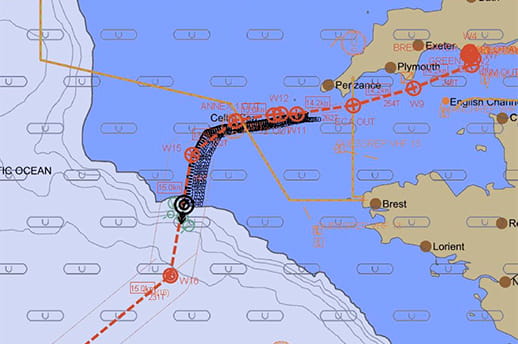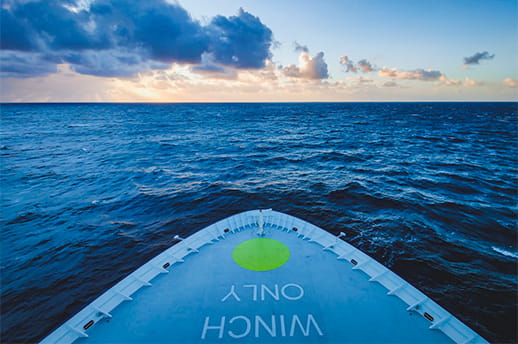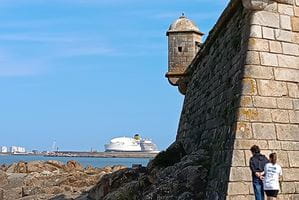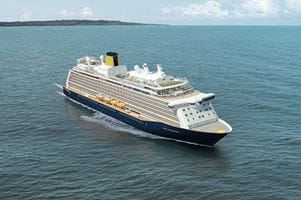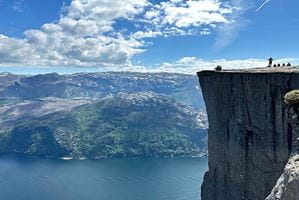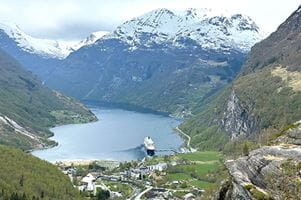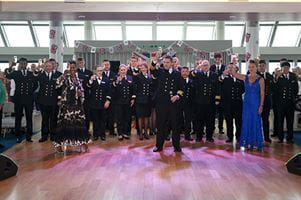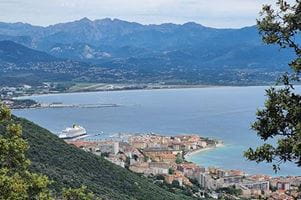Spirit of Adventure blog
A Caribbean Christmas part 1
8th December, 2021
7 December
Our departure from Southampton at 04:00 on the 7th December went smoothly, and by 0600 we had dropped the pilot off at Nab pilot ground (east of the Isle of Wight) and were full away on passage. Throughout the morning the winds became stronger and sea state became rougher in the English Channel, and we began to feel more movement of the ship as we progressed westwards.
The bridge department on Spirit of Adventure monitors a wide array of meteorological information continuously, ensuring all upcoming conditions on the ship’s voyages are identified promptly. The updated information we were receiving about Storm Barra, and the implications it would have for sea conditions in the Bay of Biscay and the Atlantic crossing, meant that proceeding as planned would see us encountering waves and swell forecasted to be around eight metres in height. This just an average – some would likely be significantly higher.
It was decided to head for shelter, letting the worst of the conditions pass, and to time the crossing between Storm Barra passing, but before the arrival of a subsequent low-pressure system. Contact was made with the port of Portland, about 50 miles west of Southampton.
Approaching the pilot boarding ground our course was altered to starboard, in order to put the port-side pilot ladder more on the leeward side of the ship, giving more favourable conditions for the pilot to board. After this, the ship was brought round to port and aligned with the entrance to the breakwater. This entrance was a reasonably narrow 160 metres of navigable water, but there was no problem in bringing Spirit of Adventure within the harbour and turning her, in order to back onto the berth, with the starboard side alongside. This meant the ship was facing the exit, making for a quicker departure.
As well as the great skill and experience of the team onboard, the vessel’s advanced propulsion systems make manoeuvres in conditions like these possible and indeed much safer compared to traditional ships. With two 2,800 horsepower bow thrusters and two 8,700 horsepower azipods, which allow for thrust to be directed in any direction, Spirit of Adventure is a hugely capable ship.
Once alongside in Portland we were significantly more sheltered, but remained ready for departure at the most suitable time, in order to have the smoothest Atlantic crossing possible.
8 December
After a sheltered and uneventful night alongside in Portland, it was decided that the morning of the 8th was the optimal time to depart. All pre-departure checks were completed and we were ready to sail by 10:00. The ship was manoeuvred off the berth and across the harbour before passing through the exit of the breakwater. Again, Spirit of Adventure’s power and manoeuvrability shone through. After dropping off the two pilots, we headed south into the English Channel, before altering course to starboard and heading west, off the south coast of England. Throughout the 8th (Wednesday), conditions remained moderate, and our passage out towards the Atlantic remained comfortable.
9 December
The morning of the 9th brought slightly more movement of the ship, but this was lessened when we altered course to port, putting the swell and winds on the beam. This not only improved comfort onboard but significantly improved the speed it was possible to make on our passage down to the Azores. By carefully considering not only the course of the ship, but by making adjustments to the ballast system, the ship was set up optimally to cope with the North Atlantic in December. This was helped by keeping a more southerly course over the shallower waters and altering to the southwest only once we had left the continental shelf and entered deeper, more settled waters.
12 December
Through the darkness of the early morning in the North Atlantic, Spirit of Adventure approached the Azorean island of Sao Miguel and the beautiful port of Ponta Delgada. All pre-arrival checks were completed, and as the ship approached the local pilot boarded. The ship was swung and reversed into the harbour, berthing port side alongside. Once docked, the rain showers passed and the sun began to shine over the town and backdrop of the hills beyond.
As is typical when a passenger ship visits a port for the first time, the port authority presents a commemorative plaque to the Captain. As Adventure is such a new ship she has made her debut call in many ports recently, with many plaque ceremonies taking place; these plaques are hung in the Wardroom.
By 16:30, all passengers and crew were back onboard and the pre-departure checks had been completed. Adventure was able to depart slightly ahead of schedule, on passage to St John’s, Antigua. The planned passage takes a rhumb line route of constant heading (that is, a track which would appear as a straight line on a flat paper map). This is slightly longer by distance compared to a great circle route, however, it results in a more southerly passage, which should mean more favourable conditions.
Felix Checksfield
Deck Cadet
The opinions expressed are those of the author and are not held by Saga unless specifically stated.
The material is for general information only and does not constitute investment, tax, legal, medical or other form of advice. You should not rely on this information to make (or refrain from making) any decisions. Always obtain independent, professional advice for your own particular situation.
